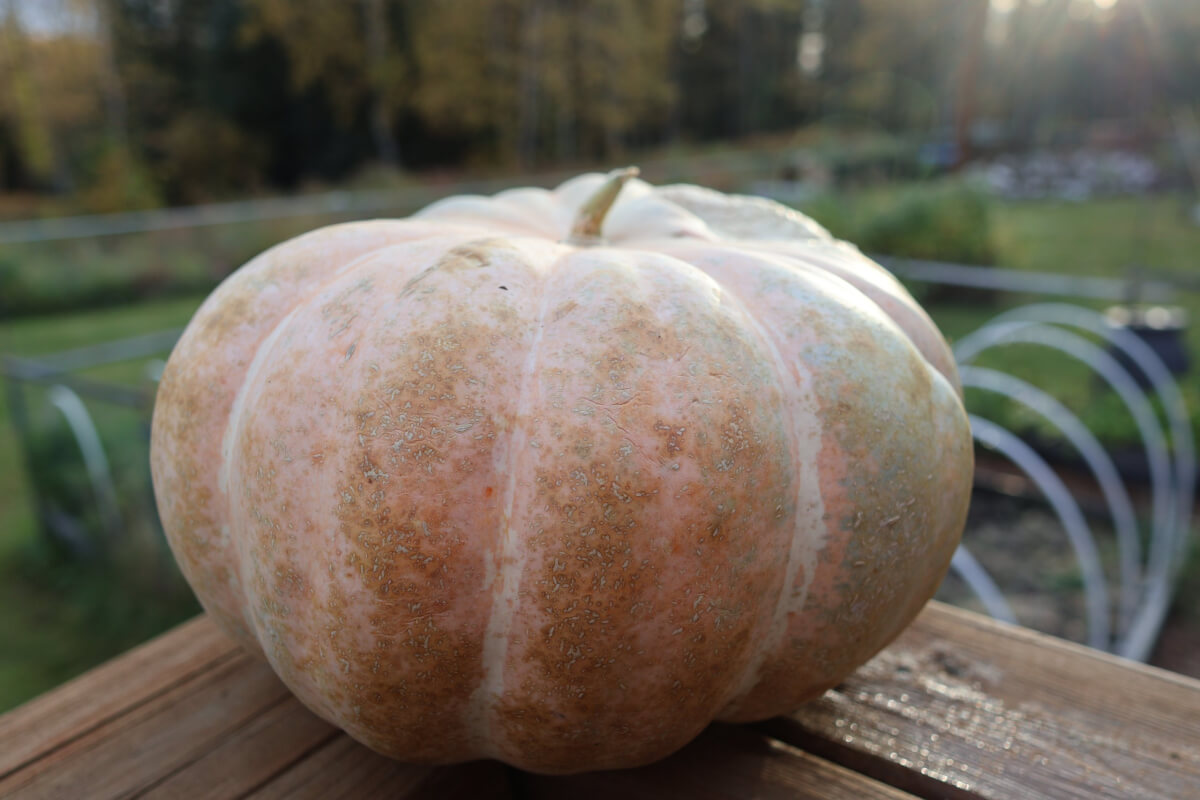We’ve had some interest expressed about the winter squash varieties that we grow. We’ve definitely found “hit or miss” results with different winter squash varieties in the far north, so we figure it might be helpful to talk more about some of them and why we grow them!
Our first variety that we’ll feature is called a Moranga Pumpkin. It’s a moderate producer in the north, but an exceptional squash that we’ve found to be absolutely worth growing. Originating in Brazil, this heirloom variety produces a pink and often green striped flat pumpkin. It grows to full size, even in our short season.
The name Moranga might sound all fancy, but it’s literally just the Portuguese word for “squash.” In Brazil, it often goes by the name “Abobora Moranga” which again sounds fancy, but just translates to “pumpkin squash.”
Despite being a South American species, we’ve found it takes well to northern growing fairly well. It’s a reliable producer in 90 to 100 days, perfect for our short season. We often get two to three squash per plant and given their size, that’s fully adequate for our needs. It’s not particularly field hardy, so it’s one of those you want to get into the curing process as soon as possible or you risk early spoilage.
This squash is an excellent stand in for anything you’d use pumpkin in. It can certainly be baked, turned into pumpkin pie, used as a foundation for squash soup and any common use of more traditional pumpkins. Given its excellent sweet and savory flavor, elevated well above the common “North American pumpkin,” we’d never use it for carving for a Halloween decoration.
We’ve been growing this variety for about four years now and enjoy it every single season. It’s hard for us to pick a favorite between our two pumpkin varieties that we grow, but we think tomorrow’s pumpkin is the clear winner in that regard.


